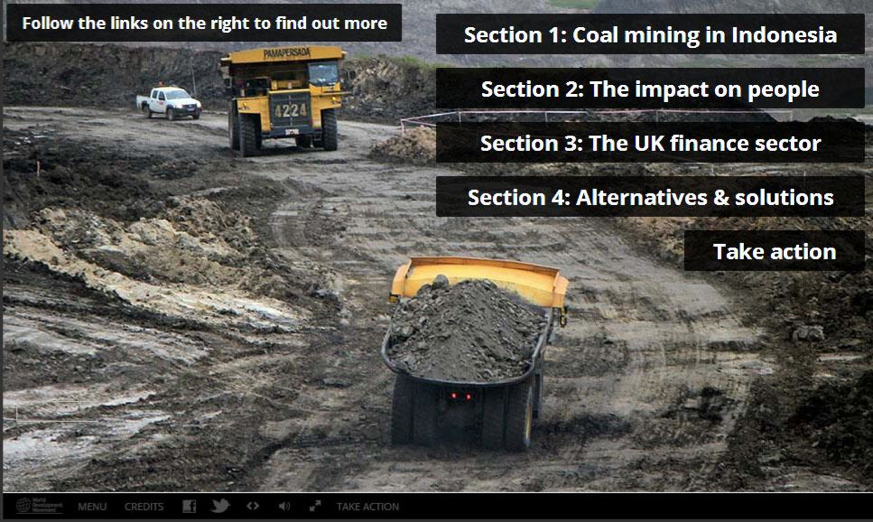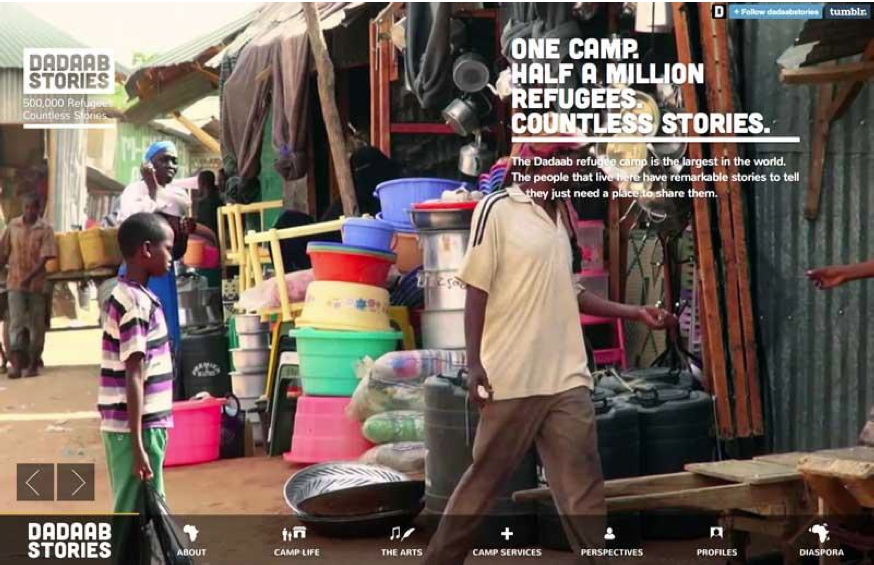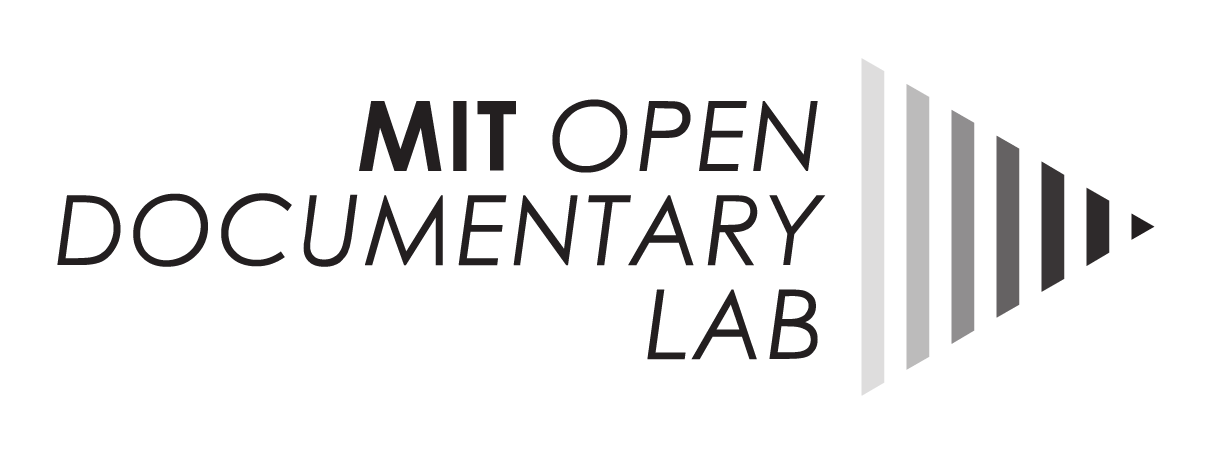
07 May Funding Models for Documentary Part 2: The Interactive Documentary | Arnau Gifreu
Funding Models for Documentary
Part 2: The Interactive Documentary
By Arnau Gifreu
Some formulas mentioned in the first model (broadcasters, production companies, other institutions and agencies, micro-patronage systems and collaborative models) are included in this analysis of the second documentary expression form, the interactive documentary. The possibilities of this expression form in relation to possible funding models and consumption are still unknown in light of the fact that the traditional documentary genre is in third place in the consumption preferences of Europeans, both on television and in feature films, with 32% of the market (IAB Europe, 2012). In the traditional format, actors with varied interests such as universities, NGOs, research labs, print, etc., joined together to generate mixed funding initiatives. At this stage some actors from the so-called “new media” have also joined in, including digital agencies, production companies and media studies, multimedia newsrooms, technology brands, ICT companies and internet services.
The main channels of financing the interactive format are broadcasters: ARTE, the National Film Board of Canada, France5 and VPRO (and many others). In countries like France and Canada another important source is government funds for film production, mainly the National Center for Cinematography [Centre national du cinéma et de l’image animée, CNC, France] (Lietaert 2011, p. 84). Created in 1946, the CNC is a public administrative organization set up as a separate and financially independent entity. The principal missions of the CNC are to support film, broadcast, video, multimedia and technical industries, as well as the preservation of film heritage. Other sources include production companies and multimedia studies such as Honkytonk Films and Upian in France, Helios Design Labs in Canada, Submarine Channel in the Netherlands and Barret Films in Spain.
Le Monde and The New York Times are getting interested in this format; festivals and conferences on the subject are emerging, such as the IDFA Doclab, the i-Docs conference, interDocsBarcelona and WebDox; laboratories of applied research are being created, including the MIT Open Documentary Lab and i-Docs Lab; platforms like interDOC are being developed; markets such as the Cross Video Days, the Sunny Side of the Doc and Sheffield DocFest are appearing; private funds for development are also emerging at the Tribeca Film Institute and the Sundance Institute; database projects like MIT Docubase, docSHIFT Index and interDOC_indice are being developed; museums and brands like Apple (see Your verse series, for example) and Google are interested in this form of expression. All this contributes to economic development, but momentum within this format is only partial and possibilities in terms of business models should be expanded in proportion to the increase in works and projects produced.

Apple “What will your verse be” series
Another way of funding at this second stage of the documentary is economic contributions from foundations, charities or nonprofit organizations and agencies or brands that respect the editorial independence of the documentary (Radshaw cited by Lietaert 2011, p. 83). One of the cases funded by foundations and academia is Giving Time (2013), an interactive documentary directed and produced by researcher Julia Scott-Stevenson as a practical application of her doctoral thesis and sponsored both by her university, the Macquarie University, and the subject of this documentary, the Australian Red Cross. Additionally, the project Dirty Money (2013), an interactive documentary by Glyn Thomas is funded by the World Development Movement, which denounces the UK-bank funding of Indonesian coal mines.
 Dirty Money
Dirty Money
Another possible funding model is to present projects under development to calls for project festivals and markets. An example of this trend is Dadaab Stories (2013), a project by Film Aid funded by the TFI New Media Fund and the Ford Foundation, which shows life in the refugee camp of Dadaab, the world’s largest refugee camp located in Kenya. To see most of New Media Funding Resources, we recommend taking a look at the POV section.
 Dabaab Stories
Dabaab Stories
Arnau Gifreu and Valentina Moreno
References
European Interactive Advertising Association (2012): Mediascope Europe Studio.
Film Aid; TFI New Media Fund; Ford Foundation (2013): Dadab Stories. http://www.dadaabstories.org/
Gifreu-Castells, Arnau; Moreno, Valentina (2014). Estrategias y modelos de financiación del documental interactivo y transmedia [Strategies and financing models for interactive and transmedia documentaries]. Fonseca, Journal of Communication, n. 9, pp. 41-63. ISSN: 2172-9077.
Gifreu-Castells, Arnau (2013). El documental interactivo. Evolución, caracterización y perspectivas de desarrollo. [The interactive documentary. Evolution, features and development perspectives]. UOC Press. Editorial UOC. ISBN: 978-84-9064-035-7.
Gifreu-Castells, A.(2013). El documental interactiu com a nou gènere audiovisual. Estudi de l’aparició del nou gènere, aproximació a la seva definició i proposta de taxonomia i d’un model d’anàlisi a efectes d’avaluació, disseny i producció [The interactive documentary as a new audiovisual genre. Study of the emergence of the new genre, approach to its definition and taxonomy proposal and a model of analysis for the
purposes of evaluation, design and production][PhD]. Barcelona: Universitat Pompeu Fabra. Departament de Comunicació.
Moreno, V. (2013). El Documental Interactivo, una aproximación a un género en gestación [Interactive Documentary, an approach to a genre in pregnancy][Master’s Degree Thesis]. Madrid: Universidad Complutense de Madrid. Facultad de Ciencias de la Información.
Lietaert, M. (2011): Webdocs. A survival guide for online filmmakers. Amsterdam: Not so crazy and IDFA Doclab.
Scott-Stevenson, J.; Macquarie University; Australian Red Cross (2013): Giving Time. http://givingtime.org.au/
Thomas, Glyn. World Development Movement (2013): Dirty Money. http://www.wdm.org.uk/webdoc
Bonus tracks
Dabaab Stories. MIT Docubase. http://docubase.mit.edu/project/dadaab-stories/
New Media Funding resources. POV. http://www.pbs.org/pov/filmmakers/new-media-funding-resources.php#.VPL1HvlwvIg
Stratégies. Le webdoc humanise. Le corporate. http://www.strategies.fr/etudes- tendances/tendances/162344W/le-webdoc-humanise-le-corporate.html
AH. Blog de Herv



